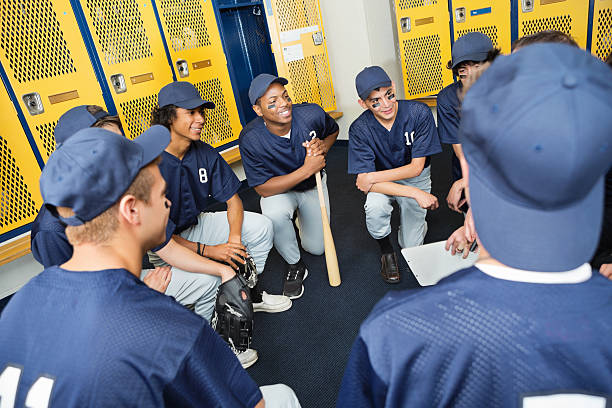Is it easy to get a baseball scholarship
Securing a baseball scholarship can be a game-changing opportunity for student-athletes aiming to combine their love of the sport with a quality education. However, the question remains, “Is it easy to get a baseball scholarship?” The answer lies in understanding the process, requirements, and strategies for navigating the competitive world of college recruiting.
This comprehensive guide will help high school athletes, parents, and even college coaches understand the intricacies of baseball scholarships. From eligibility criteria to recruiting processes, we’ll explore everything you need to know to boost your chances of success.
Understanding Baseball Scholarships

Definition of Baseball Scholarships
A baseball scholarship is financial aid awarded to student-athletes who demonstrate exceptional skills and potential in the sport. NCAA schools, NAIA institutions, and junior colleges can offer scholarships. The aid provided can cover tuition, housing, and other educational expenses, helping families manage rising college costs.
Types of Scholarships (Partial vs. Full-Ride)
Unlike sports like football or basketball, full-ride baseball scholarships are rare. Most scholarships offered are partial, meaning they cover only a portion of college expenses. NCAA Division I programs, for example, have 11.7 scholarships to distribute among a roster of 27-35 players. This scarcity makes it even more competitive and highlights the importance of excelling both on and off the field.
The Importance of Baseball in College Sports
Role of Baseball in U.S. Colleges
Baseball is a staple in many college athletic programs across the United States, producing some of the most talented players in Major League Baseball (MLB). Colleges invest heavily in their baseball teams, not just for athletic recognition but also as a way to attract diverse talent to their campuses.
Statistics on College Baseball Scholarships
According to the NCAA, only about 2% of high school athletes are offered sports scholarships to compete at the collegiate level, and even fewer in baseball. This makes the process highly selective, emphasizing the need for preparation and strategy.
Eligibility Criteria for Baseball Scholarships
Academic Requirements
Colleges prioritize student-athletes who excel academically. NCAA eligibility rules require a minimum GPA of 2.3 in core courses for Division I and II schools, alongside corresponding SAT/ACT scores. Strong academic performance can also open doors for additional merit-based aid.
Athletic Requirements
To catch the attention of recruiters, athletes must showcase superior skills, exceptional athleticism, and a deep understanding of the game. Performance stats, such as batting average or pitching speed, play a critical role in evaluations.
Character and Leadership Attributes
Beyond athletic and academic achievements, recruiters look for well-rounded individuals who demonstrate leadership, a strong work ethic, and good sportsmanship—qualities essential for thriving in the team environment of college baseball.
How to Start the Baseball Scholarship Journey

Early Preparation in High School
Preparation should start as early as freshman year. Focus on academic performance, participate in competitive baseball programs, and build a solid foundation of skills through rigorous training and gameplay.
Role of Club and School Teams
Playing for a reputable club or high school team can significantly boost your visibility. Coaches with strong networks often recommend their players to college recruiters, making team selection a strategic aspect of the process.
ALSO READ: DME Sports Academy Scholarship: Your Ultimate Guide to Success
College Recruiting Process
How Recruiters Identify Talent
Recruiters evaluate talent through various channels, including game footage, live performances, and statistics. They often attend showcases and tournaments to scout players with high potential.
Key Recruiting Tournaments and Showcases
Events like Perfect Game USA and Prep Baseball Report (PBR) provide a platform for athletes to showcase their skills in front of college recruiters. Participating in these events can open doors to scholarship opportunities.
Building a Baseball Resume
Essential Components
A strong resume highlights your achievements, performance records, GPA, and extracurricular involvement. Include detailed stats, such as home runs, earned run average (ERA), or stolen bases, to give recruiters a clear picture of your capabilities.
Examples and Templates
Use online templates to design a clean and professional resume. Tools like Canva have free options tailored to showcase athletic accomplishments effectively.
Video Highlights for College Recruiters
Creating an Effective Highlight Reel
A highlight reel is a critical part of your application. Keep it concise—showcase your best plays in less than five minutes. Include angles that clearly capture your technique and performance.
Common Mistakes to Avoid
Avoid poor-quality footage, irrelevant clips, or lengthy intros. Recruiters typically dedicate limited time per reel, so make every second count.
Navigating the NCAA Regulations
NCAA Eligibility Center Overview
Register with the NCAA Eligibility Center as early as your sophomore year to ensure compliance with their academic and amateurism standards. This registration is essential for Division I and II athletes.
Key Rules to Follow
Stay aware of NCAA regulations regarding recruiting timelines, scholarship limits, and communication rules. Violating these guidelines can jeopardize your eligibility.
Alternatives to NCAA Scholarships

NJCAA and NAIA Scholarships
Junior colleges (NJCAA) and NAIA institutions also offer valuable scholarship opportunities. These programs feature competitive play while allowing athletes to develop their skills further.
Other Leagues Offering Baseball Scholarships
Explore smaller leagues or regional programs, which often provide scholarships with less competition. These opportunities are ideal for athletes looking to balance academics with sports.
The Role of Coaches in Securing Scholarships
Building Relationships with Coaches
Strong relationships with recruiters and college coaches can make a significant difference. Reach out with personalized emails, attend campus events, and stick to professional, respectful communication.
Importance of Campus Visits
Campus visits allow players to assess the facilities, meet the coaching staff, and determine if the program aligns with their goals. It also gives coaches a chance to evaluate the athlete in person.
Financial Aid Beyond Baseball Scholarships
Combining Athletic Scholarships with Academic Aid
Many student-athletes supplement partial scholarships with academic awards to cover their college expenses fully. This makes excelling in academics a non-negotiable aspect of the scholarship equation.
Grants and Need-Based Financial Aid
Explore federal and state financial aid programs like FAFSA, which can further reduce the financial burden of college.
Real Stories: Successes and Challenges
Case Studies of Student-Athletes
Consider the story of Alex, who secured a baseball scholarship despite limited resources. His relentless practice, academic effort, and outreach to coaches paid off when he earned a spot on a Division II team.
Common Hurdles and How to Overcome Them
Challenges like injuries, academic struggles, or limited visibility are common. Overcoming these requires resilience, adaptability, and taking advantage of every opportunity for improvement.
Common Myths About Baseball Scholarships
Debunking Misconceptions
- Myth 1: Only Division I schools offer scholarships.
- Fact: Scholarships are available at all levels, including Division II, NJCAA, and NAIA.
- Myth 2: All scholarships are full-rides.
- Fact: Most are partial scholarships that cover only specific costs.
Realistic Expectations
Securing a scholarship requires hard work, dedication, and strategic planning. It’s competitive, but with the right approach, achievable.
FAQs: Baseball Scholarships Simplified
- What percentage of players get a baseball scholarship?
Approximately 2% of high school baseball players earn scholarships to play at the collegiate level.
- Do Division III schools offer scholarships?
Division III schools don’t provide athletic scholarships, but they do offer academic and need-based aid.
- Can transfer students get scholarships?
Yes, many programs offer scholarships to transfer students who meet their criteria.
Conclusion
Is it easy to get a baseball scholarship? The path is undoubtedly challenging, requiring commitment, preparation, and perseverance. However, with the right strategies, support system, and mindset, your baseball dreams are within reach. Start preparing today, and take full advantage of every opportunity—because your future could be just one swing away.







